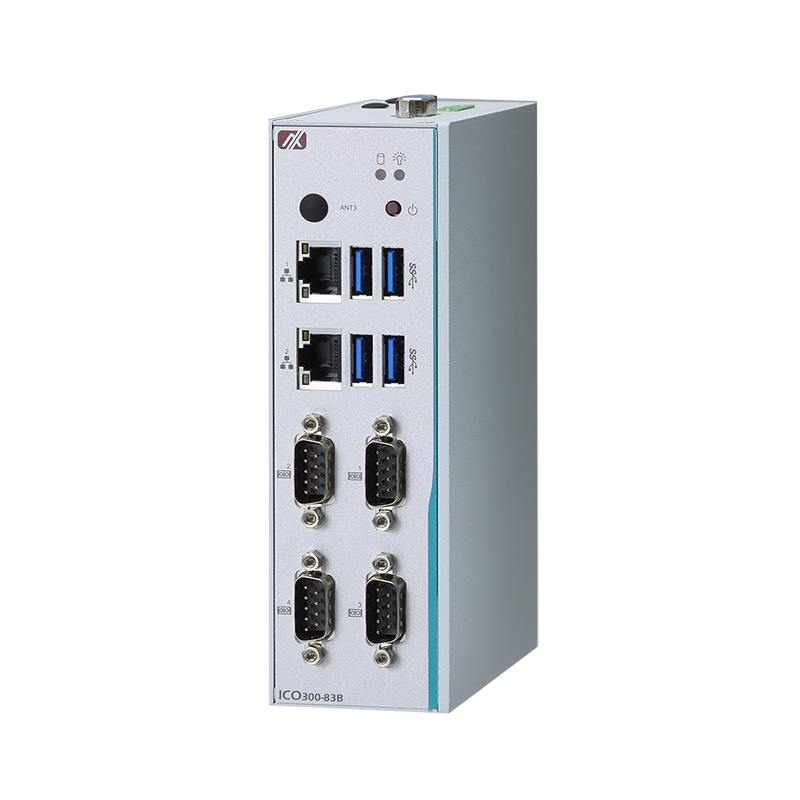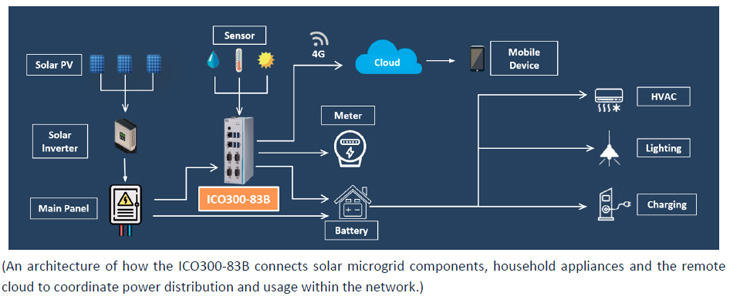|
Microgrid – the Energy Solution for the Future
|
|
|
 |
|
How energy is generated and delivered is changing fast – and this is most noticeable with the implementation of microgrids. Designed to serve a local community, a microgrid is a small energy network that generates and distributes electricity to nearby households, facilities, or the entire neighborhood. It is typically tied to a larger power grid but can run independently using its own local energy sources. Microgrids consist of energy generation and storage equipment, electrical appliances, as well as switch and control systems for regulating and optimizing energy flow, while some newer ones also have electric vehicle (EV) charging stations. Microgrids are defined by several key characteristics:
Microgrids make heavy use of renewables. Unlike large-scale electrical grids depending on nuclear or fossil fuels to produce power, microgrids can generate electricity from solar panels, wind turbines, and other renewable energy resources. Utilizing renewables allows microgrids to be deployed close to those they serve in local neighborhoods. It eliminates the need to transport power over long distances from the main grid, providing access to electricity for rural or isolated areas which cannot be easily connected to national grids. By taking advantage of green sources near the point of consumption, microgrids also help drive the popularization of solar PV systems and wind farms to promote the use of clean energy, ultimately leaving a smaller carbon footprint that will benefit ecological sustainability.
Microgrids are autonomous, providing energy self-sufficiency. A microgrid can disconnect from the main grid and continue to operate as a self-sufficient island to power its local customers even when the main grid is down. The use of renewable energy sources has made communities more resilient to blackouts, with the ability to generate power locally and use their own electrical storage, in the meantime easing demand stress on the grid. This has proven to be particularly helpful with severe weather becoming more frequent and making power grids more vulnerable than ever before. The 2021 Texas winter storms crippling most of the state’s grid operations have exposed the fragility of the traditional utility infrastructure.
Microgrids are smart. A microgrid needs a controller to harness its energy sources and distribution equipment and to control how electricity is delivered and used in order to meet specific energy goals. With the integration of IIoT gateway technologies, the controller is able to perform all-year-round grid status monitoring to provide an accurate view of the supply-demand picture as well as the health of grid energy assets. It helps utility service providers make better demand forecasts to optimize energy efficiency performance, meanwhile minimizing the impact in times of peak demand with faster response to curb power usage. A sustainable supply-demand balance within the grid network can be achieved.
|
Challenges
As one of the largest renewable energy solution providers in the world, our customer is dedicated to developing solar energy solutions and microgrid systems for years, with business specifically targeting solar PV integration, smart grids, and charging systems. In the process of developing solar panels and batteries for a microgrid, the last mile to complete is to build an energy control system with smart grid capabilities to maximize energy independence. The customer needs a ruggedized and ultra-reliable gateway system to monitor the grid 24/7 and gather real-time data of the grid operation, solar panels, battery loads, etc. This intelligent IIoT gateway is expected to operate across an extended range of temperatures to deliver consistently reliable performance under harsh environments. Meanwhile, stable 4G/LTE network connectivity is also a must for users to remotely manage the system.
Main requirements:
- Low-power, high-performance Intel® Celeron® processor
- 4G/LTE communication capability
- Supports a wide range of operating temperature
- Reliability and long service life
|
Axiomtek’s ICO300-83B Intelligent Gateway Streamlines Microgrid Operation
 Axiomtek has proposed its ICO300-83B – a robust fanless DIN-rail embedded system built on the low-power consumption Intel® Celeron processor N3350 (formerly codename: Apollo Lake) – to meet the customer’s expectations. The ICO300-83B comes with two GbE LAN, four RS-232/422/485 ports, and one DDR3L-1866 SO-DIMM slot for holding up to 8GB of system memory. It provides two full-size PCI Express Mini Card slots: one for mSATA storage and another for 3G/4G/LTE/GPRS/Wi-Fi connection, which allows the system to function as a highly adaptable IIoT gateway with flexible communication and data transfer options. Designed to operate in exceedingly rough conditions, the ICO300-83B supports an extended temperature range from -40°C to +70°C, 12 to 24 VDC wide range power input with overvoltage and reverse protection, plus up to 2G vibration endurance. In order to prolong the system’s service life, Axiomtek has also modified its internal parts including the RTC battery, resistors and capacitors to tailor to the customer needs. |
Application
The customer has adopted Axiomtek’s ICO300-83B into its microgrid system, with intelligent grid capabilities to monitor and manage solar energy assets including solar PVs, inverters, batteries as well as energy-consuming applications, ensuring all machines within the grid remain connected and function properly at all times for optimal energy use.

|
|
Intelligent communication gateway. Acting as a communication intermediator with rich I/Os and wireless connectivity, the ICO300-83B gateway system enables seamless data transfer between local devices and remote management servers, enhancing machine-to-machine communication over a broad range of protocols to accelerate energy grid operations.
Remote management & edge computing. The ICO300-83B IoT gateway combines remote monitoring software and edge computing to enable remote control of grid operations. Raw data collected from sensors and meters, such as voltage, current, sunlight intensity and power consumption, is processed and sent to a remote cloud or control server for real-time tracking and analysis. Remote management based on sensor-generated insights and actual usage patterns can precisely regulate how electricity is generated, distributed, and consumed within the microgrid to reduce energy waste and improve grid performance. It also shortens time-to-response in the case of emergency to minimize the possibility of the outage, allowing local devices to quickly react to urgencies with data-triggered actions.
|
|
|

